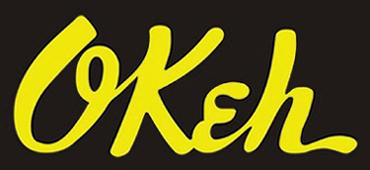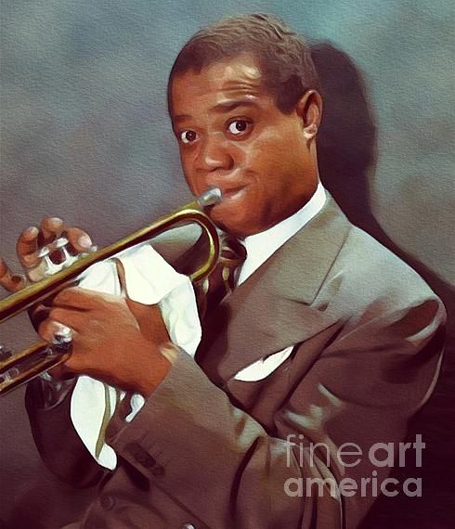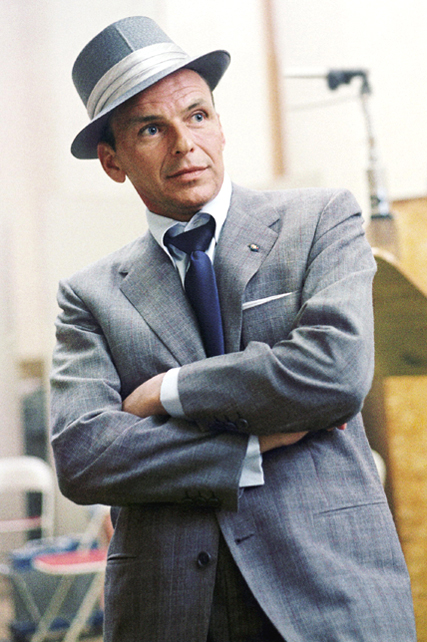Traditional jazz: “I Can’t Give You Anything but Love”, “Ain’t Misbehavin’”, “Stardust” and “Lazy River”
(Edited)
I Can’t Give You Anything but Love
Louis Armstrong and his Orchestra: Louis Armstrong (trumpet, vocals), Albert Nicholas and Charlie Holmes (alto saxophone), Teddy Hill (tenor saxophone), Jay C. Higginbotham (trombone), Luis Russell (piano), Lonnie Johnson (guitar), Eddie Condon (banjo), Pops Foster (double bass) and Paul Barbarin (drums) (1929).
In early 1929 Louis Armstrong moved to New York at the request of the Okeh executives, who wanted to record him with the Savoy Ballroom orchestra directed by pianist and composer Luis Rusell, one of the best in the city. Also, Okeh Records started allowing him to record popular songs, like “I Can’t Give You Anything But Love”, which you can find below. Afterwards Armstrong found work at the Connie’s Inn in Harlem, a venue for elaborately staged floor shows. He also played in the pit orchestra for the musical Hot Chocolates, an all-black revue written by poet, songwriter and song lyricist Andy Razaf and pianist Fats Waller.


Okeh Records logos
One day Armstrong sang and played “Ain’t Misbehavin’” by Waller and Harry Brooks with lyrics by Razaf from the pit as a between-act number, and the reviews about his performance in the New York Times were so favorable that his name was included in the show’s program and he began to act on stage. Three months later he recorded the song tweaking the original melody with the Carroll Dickerson Orchestra and this became his biggest selling record to date, touching audiences outside the jazz world; please, find it below. He also had quite a lot of success with other vocal recordings.

Louis Armstrong drawing
First Armstrong would expose the melody of the pieces with the trumpet, then he would sing them and finally he would play a trumpet solo. One of his most famous versions was the one he did of “Stardust” by Hoagy Carmichael in 1931, in which he shows his unique vocal sound and style, and underlines the emotional essence of the song by simplifying its melody. Another example of his groundbreaking approach to melody and phrasing can be found in his radical re-working of the jazz and pop standard “Lazy River” by Carmichael and Sidney Arodin, in which he introduces a passage of his scat singing. Please, find both below. As had happened before with the way of playing trumpet and other instruments, his vocal innovations had lasting effects on later jazz singers, such as Billie Holiday and Ella Fitzgerald, and popular music vocalists, like Bing Crosby and Frank Sinatra.

Frank Sinatra


Ain’t Misbehavin’
Louis Armstrong and his Orchestra: Carroll Dickerson (conductor, violin), Louis Armstrong (trumpet, vocals), Homer Hobson (trumpet), Bert Curry and Crawford Wetherington (alto saxophone), Jimmy Strong (clarinet, tenor saxophone), Fred Robinson (trombone), Gene Anderson (piano), Mancy Carr (banjo), Pete Briggs (double bass) and Zutty Singleton (drums) (1929).

Stardust
Louis Armstrong and his Orchestra: Louis Armstrong (trumpet, vocals), Zilner Randolph (trumpet), Lester Boone (clarinet, alto saxophone), Albert Washington (clarinet, tenor saxophone), George James (reeds), Preston Jackson (trombone), Charlie Alexander (piano), Mike McKendrick (banjo, guitar), John Lindsay (double bass) and Tubby Hall (drums) (1931).

Lazy River
Louis Armstrong and his Orchestra: Louis Armstrong (trumpet, vocals), Zilner Randolph (trumpet), Lester Boone (clarinet, alto saxophone), Albert Washington (clarinet, tenor saxophone), George James (reeds), Preston Jackson (trombone), Charlie Alexander (piano), Mike McKendrick (banjo, guitar), John Lindsay (double bass) and Tubby Hall (drums) (1931).
0
0
0.000

Do you want to get involved? Do you want to support music and this project? Follow us to keep you updated and read our Introduction post!